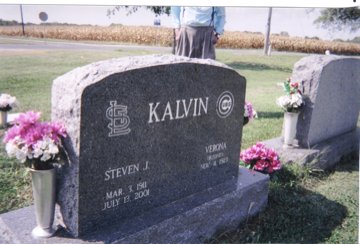Part of a ritual we’ve taken up recently on visits with my dad in Chicago. We “go for a ride,” as he used to say when we were kids, across the North Side. We stop at the Dairy Queen on Irving Park Road just west of Central Avenue. Then we might drop by Mount Olive Cemetery, where much of his (very Lutheran, very Norwegian) family is interred.
Yesterday we went for a ride even though it was the beginning of the homeward rush hour, dodged most of the traffic, and swung by the DQ. I managed to dump part of my chocolate shake down my front before we proceeded. “You feel like going to the cemetery?” my dad asked when I’d cleaned myself up and started up the car to leave.
Through the gate off Narragansett Avenue, keeping left until you can’t go left anymore, then turning toward a section I’ve come to recognize. My grandparents are off to the right, just beyond a couple small conical piney shrubs. My dad’s grandparents and most of their children are off to the left. Other relatives are scattered around and about, and yesterday my dad stopped us near a gravesite we’ve passed recently without mention–an aunt, an uncle, a couple of cousins and their wives (the men died young; one of the women lived to be 103).
Up ahead, an animal moved across the road: a coyote, inside the cemetery and well inside the Chicago city limits. I’d heard they were here, but I’d never seen them. This one–a female, I think–settled into the grass just beyond the Brekke grave. We watched for about five minutes. When the mosquitoes started to swarm, we decided to walk over to the grave. The coyote got up and moved off among the headstones and monuments.



